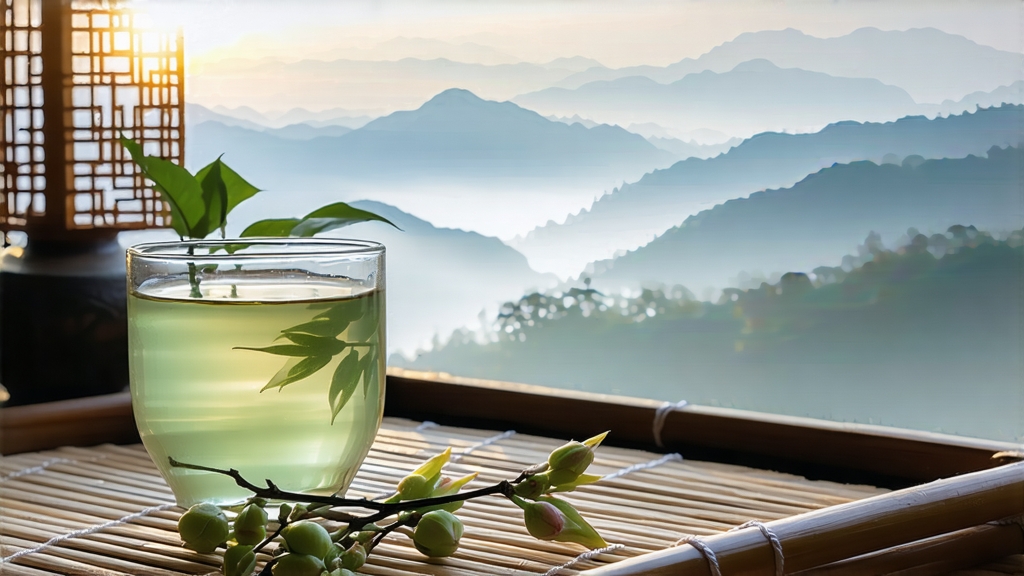
Bai Hao Yin Zhen—literally “White Hair Silver Needle”—is the most aristocratic expression of Chinese white tea, a style so delicate that it appears almost untouched by human hands. To international drinkers accustomed to the dark heft of Assam or the smoky swagger of Lapsang, Yin Zhen offers a revelation: tea that tastes like liquid moonlight, cool and quietly sweet, leaving the palate cleaner than it found it. Yet behind that seeming simplicity lies centuries of empirical craft, microclimate worship, and a production code so minimalist that any mistake is irreversible.
History: From Imperial Tribute to Global Muse
The first written record of “white tea” appears in Song-dynasty treatises (960-1279), but those texts refer to compressed cakes whose young leaves were coated with a silvery down. The loose, bud-only Yin Zhen we know today took shape in Fuding county during the late Ming, when the imperial court shifted from compressed tea to loose leaf. Local tea tax archives from 1796 note that “needle-shaped downy buds” were packed in lead-lined chests and sent northward by horseback, escorted by armed guards—an honor otherwise reserved for ginseng and pearls. Foreigners tasted it early: an 1880 Fuding customs ledger lists 1,200 chests of “Pekoe Silver Tips” shipped to London at prices double those of Keemun. European painters later immortalized the fluffy buds in still-life watercolors, mistaking them for white camellia blossoms.
Terroir: Two Townships, Two Characters
Authentic Yin Zhen is produced in only two micro-zones: Fuding and Zhenghe, both in northeastern Fujian. Fuding, hugged by the East China Sea, enjoys morning fogs that slow evaporation, allowing buds to wither gently; the resulting liquor is peach-sweet with a marine hint. Zhenghe, higher and more forested, gives cooler nights that lock in jasmine-like aromatics and a stony finish. Purists can distinguish them blind: Fuding needles lean toward honeydew and kelp, Zhenghe toward orchid and wet slate. Soil matters too—Fuding’s red granitic sand drains fast, stressing bushes into producing more protective down; Zhenghe’s deeper yellow earth nurtures slower growth and smaller, more perfumed buds.
Plants: The Da Bai & Da Hao Dynasty
Two cultivars dominate. Fuding Da Bai (“Big White”) develops buds the length of a little finger, densely clad in trichomes that shimmer like frost under LED light. Da Hao (“Big Down”), peculiar to Zhenghe, produces shorter, plumper needles with even thicker pubescence. Both are descendants of the wild “Snow Bud” strain first documented by monks on Taimu Mountain a millennium ago. Gardeners propagate by cuttings to preserve clonal sweetness; seeds are too genetically volatile for the tiny harvest window demanded by Yin Zhen. A single mu (1/15 hectare) yields only 3–4 kg of finished buds, explaining why top-grade Silver Needle retails for more than silver itself.
Harvest: Dawn, Dew & Dexterity
Picking begins when the last spring frost is still a rumor, usually between mid-March and early April. Only the unopened bud, sheathed in its first two infant leaves, is taken. Workers wear cotton gloves to avoid fingerprint oils; fingernails must be trimmed flush so the bud is “snapped” rather than pinched, preventing oxidation enzymes from rupturing. The daily harvest window is cruelly short: buds plump with dew but must reach the withering shed before the sun climbs above 30°. Experienced pickers can gather 500 g of buds in four hours—about 2,000 individual tips—yet 5 kg of fresh buds shrink to 1 kg of finished tea.
Craft: The Art of Doing Almost Nothing
White tea’s philosophy is Daoist: create the conditions, then retreat. Buds are laid on bamboo trays 2 cm deep and placed in a sun-warmed corridor where louvered walls modulate airflow. For the first six hours they bake gently in diffused light, losing 30 % moisture and developing a faint mango note. As noon heat intensifies, trays are moved indoors to continue withering at 26 °C and 65 % humidity for another 30–36 hours. During this interval the tea “ferments” in the Chinese sense—enzymatic, not microbial—